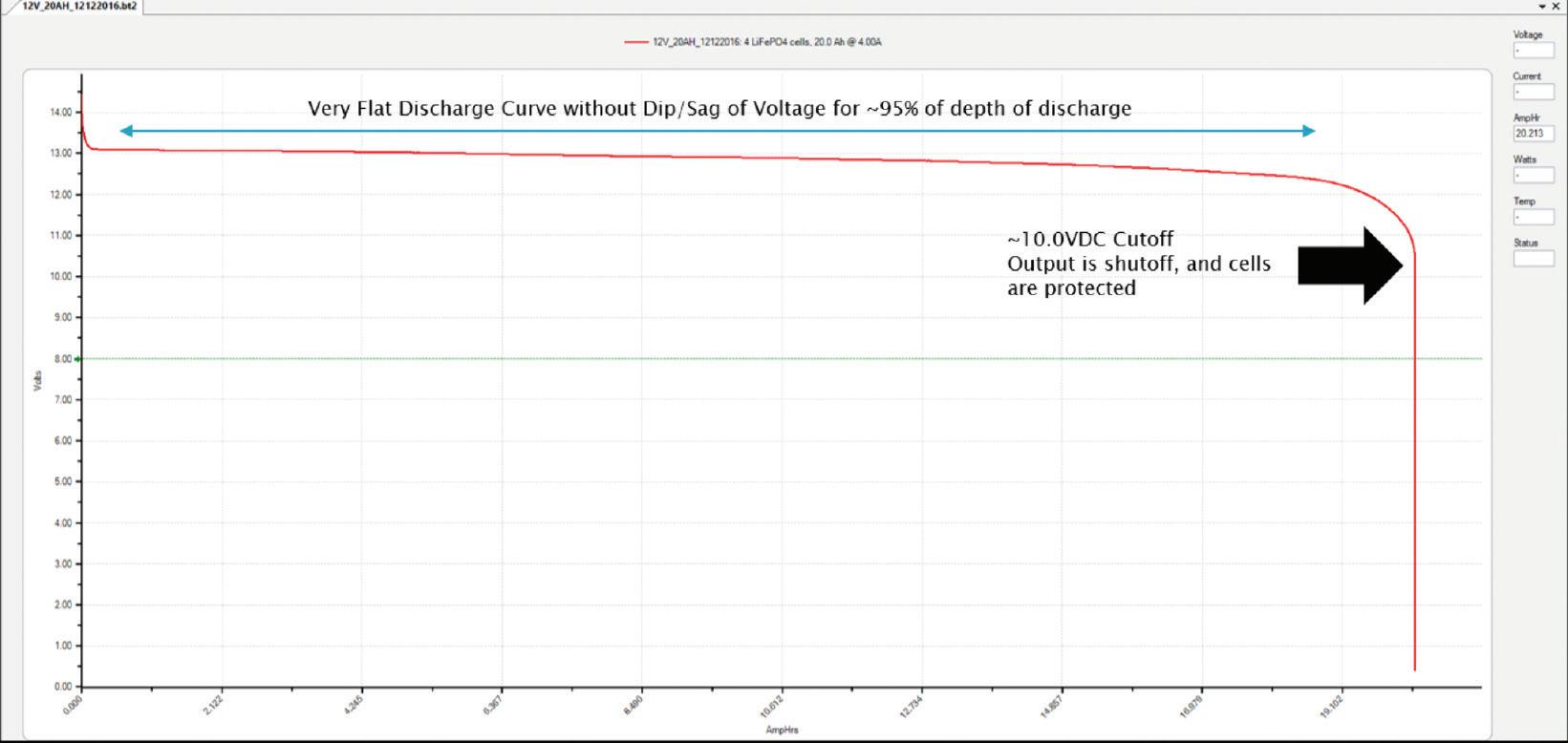
4 minute read
A Better Lithium Battery
A Better Lithium Battery
by Kevin Zanjani
Advertisement
In recent years, Lithium Iron Phosphate (LiFePO4) batteries have gained traction as a viable replacement for SLA/AGM batteries for energy storage applications. If that first sentence didn’t make much sense to you, don’t worry; you’ll be a little wiser by the time you read all the way to the end.
You probably know them as the batteries that you use to power your snow blower, your electric car, or R/C vehicles. Technically, these batteries are known by their chemical makeup: LFP, Lithium Iron Phosphate, Lithium Ferrous Phosphate, LiFe, and LiFePO4. There’s a reason this battery technology is used so widely in so many applications - it has a tremendous degree of thermal and chemical stability. Just as importantly, this technology is also intrinsically safer because of an ultra-stable Fe-P-O chemical bond.
If you’re a consumer trying to better understand the offerings out there – even if you’re a storage system provider who needs to explain the benefits of your system to a potential buyer – you run across terminology like charge cycles and lifespan. Essentially, these terms describe how much use you’ll get from the battery; every time you use up all the power in the battery and then recharge it until it’s ready to go again, it’s called a charge cycle. Due to the nature of chemicals, you don’t actually recharge the battery to a full 100 percent – each cycle “refills” the battery capacity just short of the last full amount. How many times you’re able to complete this cycle is what defines the battery’s lifespan.
The battery chemistry of a LiFePO4 appears to offer 3,000+ charge cycles, with manufacturers’ data showing at least 8 years in lifespan. In other words, based on average use (and what you’re using that battery for) it should last 8 years before you’ll need to replace it. Compared to other competing battery chemistries like Li-Ion Polymer (and chemistries based on LiCoO2, among others) LiFePO4 is considered to be robust in terms of cycle life and performance. Another kind of battery, SLA/AGM (used in cars and golf carts, etc.) pose dangers because they can sulfate, vent, or leak. Part of the inherent safety of LiFePO4 batteries is due to their non-toxic chemistry and tight chemical bond. LiFePO4 batteries are also a lot lighter - ¼ the weight of SLA/AGM battery – and offer up to 10 times the charging cycles of their SLA/AGM cousins.

Figure 1: LiFePo4 Batteries Provide a Flat Discharge Curve allowing for > 95% Depth of Discharge
Battery convenience is as important as battery life. That might sound strange, because batteries make life more convenient by their very nature. But many of the powerful batteries that most of use without a second thought actually need a little TLC (some more than others). Case in point, LiFePO4 batteries have a built-in advanced protection circuit module and battery management system. This prevents overcurrent, overdischarge, overvoltage, as well as internal balancing. In plain language, that means (respectively) better protection from overheating or fire, lowering battery life or fire, damaging equipment, as well as ruining the battery itself. On the other hand, SLA/AGM batteries have no internal circuitry, which means that it is possible to overdischarge this legacy battery chemistry – and that means it will need additional maintenance every 2 years (versus 8 to 12 years for LiFePo4).

Figure 2: LiFePo4 Batteries Offer Enhanced Energy Performance at Low Temperatures
Additionally, due to the Peukert’s effect, SLA/AGM batteries have only a 50 percent usable capacity, after which point the voltage drops too low. LiFePO4 batteries boast a nearly 100 percent usable capacity. They also benefit from no memory effect, also known as “lazy battery”. If you continually recharge an SLA/AGM battery before it’s fully discharged, it starts to “forget” where its “fill line” is – it will keep recharging a little less each time until it dies. A LiFePO4 battery can be charged at 25, 50, or 75 percent state of charge. This makes it an excellent choice for both cyclic and standby applications like uninterruptible power systems (in case of power failures that require switching over to battery operation). Other benefits include a low self-discharge rate (about 2 – 3 percent per annum basis) and enhanced temperature performance (it lasts a long time in cold weather).
For all you nascent battery aficionados, I hope this brief introduction to basic battery chemistry was helpful. The main takeaway of all you’ve read here is that LiFePO4 batteries should be considered for various energy storage applications. It’s an attractive alternative to SLA/AGM batteries on the market, and should now be on your radar when researching the best battery for your needs.
Kevin Zanjani is the National Sales Manager at Bioenno Power. Kevin has worked in the technology industry for more than 18 years. He holds a BSEE from the University of Michigan, Ann Arbor, MSECE from the University of California, Irvine, and MBA from the University of Southern California.




